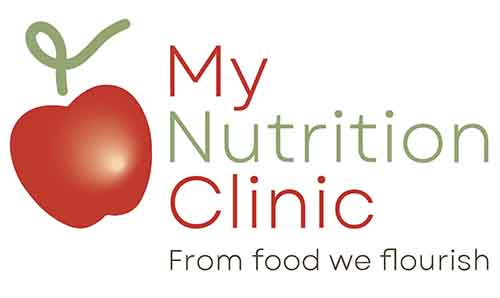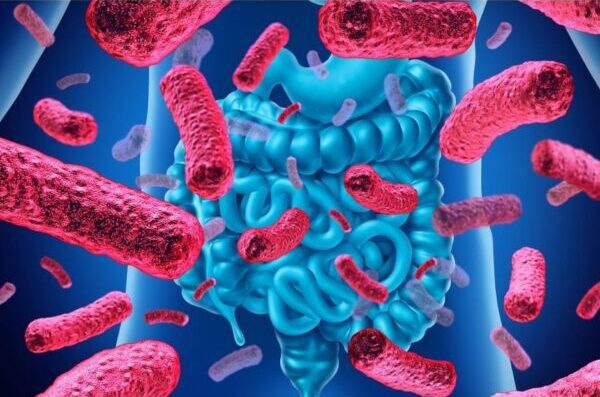Gut Health
The Gut Microbiome – A brief overview
AUTHOR:
Molly Warner, Gastrointestinal and Intuitive Eating Dietitian
Some one thousand trillion microbes are living in our gut and we can’t function without them. Considering we have more microbial cells in our body than our very own human cells, shall we get to know them a little better? Allow me to introduce you.
Once considered unhelpful and perhaps hindersome, the last decade or so has led researchers to discover mind-boggling amounts about our gut microbes. Every day the technology to analyse this science progresses and every month over 500 research articles are published on the topic.
First, let’s get the lingo down pat. ‘Microbes’ refers to ‘microorganisms’, which mainly consist of bacteria, and also fungi, viruses, archaea and protists. We might call them ‘bugs’ or ‘germs’ from time to time. The ‘microbiome’ is the collection of the microbes living in the place described. We have a skin microbiome, a vaginal microbiome (for the ladies), and of course, the gut microbiome.
The gut microbiome begins development before birth. Depending on the mode of birth, the microbiome becomes more like mum’s vaginal microbiome, or perhaps more like her skin microbiome if a C-section takes place.
The microbiome continuously changes through the lifespan, depending on diet, breastfeeding, medications, environment, stress, exercise, sleep and even genetics. The most dramatic changes occur in the first 2-3 years of life.
Let’s look closer into the gut microbiome. Beginning in the mouth, there are more than one hundred billion microbial cells, mostly on the teeth and in saliva. The stomach is home to ten million microbes – although it may seem a lot, this is the lowest population density in the gut because of the harsh stomach acid. Sometimes there is an overgrowth of unhelpful bacteria call Helicobacter pylori – this requires medication for eradication, otherwise H. pylori increases the risk of ulcers in the stomach and duodenum, indigestion (dyspepsia), and gastric cancer. Best to seek medical and dietetic assistance if you suspect a situation.
Moving into the small intestine, the types of microbes change and grow as the pH neutralises. While the upper small intestine is home to bacterial species such as Streptococcus spp, Lactobacillus spp and Veillonella spp, the lower small intestine will house more Bacteroides spp and Provotella spp. If there is a functional interruption or trauma to the small intestine, an overgrowth of bacteria can occur, just like unwanted weeds might run ramped through a garden or crop. This is called Small Intestinal Bacterial Overgrowth, or SIBO for short (more on SIBO here).
Finally, to the large intestine. The home to the largest collection of microbes in the body; one hundred trillion microbial cells, up to 2kg worth! There are many different types of microbes in the large intestine. In fact, the more diverse the microbial population, the better.
The lining of the large intestine is folded densely into crypts. The cells in the intestinal wall (epithelial cells) are protected by layers of mucus – an inner dense layer and an outer loose layer. The ‘lumen’ is the space where undigested food moves through. Most microbes live in the loose mucus layer and the lumen. If there is not enough dietary fibre for the microbes to feed on, they start to eat away at the protective mucus and can damage the intestinal wall.
Microbes are alive; they consume things (undigested food) and produce things (gases and metabolites). Just like humans, what they produce depends on what they consume, and they’ll consume what they have available. Let’s look at two scenarios…
Scenario 1. Not much food available, the occasional protein drink or fatty food, very little dietary fibre.
If nothing more is available, the microbes will eat away at the mucus layer of the large intestine. The large intestine gets the ‘dregs’ of protein and fat that couldn’t be sufficiently absorbed up in the small intestine and the microbes consume these, too. The types of microbes that prefer protein, fat and mucus will thrive. They’ll produce some helpful metabolites, but mostly metabolites that increase inflammation.* Have you ever had rotten egg farts after protein drinks? This is why. The microbes are feeding on excess protein and producing hydrogen sulphide gas. Let’s agree, this scenario isn’t ideal.
Scenario 2. A diverse range of plant foods with some smaller amounts of animal foods, regular ‘drip feeding’ of fibrous goodness across the day.
The microbes may feed a little on the odd protein or fat here and there, but mostly they’re feasting on fibre. Fibre-fuelled microbes produce metabolites** that help to regulate appetite, blood sugar levels and the immune system, fuel and maintain the intestinal cell wall, and reduce inflammation. Odourless gases are produced. Many types of microbes thrive, and a diverse microbial community inhabits the happy gut.
In case you hadn’t already gathered, the food we eat has a remarkable effect on the gut microbiome and its associated bodily functions. There are several well-known relationships between the gut and other organs, which can be described as an ‘axis’ and influenced by the food we eat:
Gut-Brain Axis: Gut microbes communicate with the brain through metabolites such as neurotransmitters
Gut-Heart Axis: Some metabolites are associated with blood pressure and heart disease
Gut-Lung Axis: The gut microbiome likely has a role to play in asthma, COPD and respiratory infections
Gut-Liver Axis: Metabolites from gut microbes reach the liver through the portal vein, this includes influencing the production of cholesterol
Gut-Kidney Axis: There is a two-way communication between the gut microbes and kidneys, and gut microbes can influence the formation of kidney stones
Gut-Skin Axis: A link has been discovered between the gut microbiome and acne vulgaris, atopic dermatitis and psoriasis
To further explore your own gut microbiome and its influence on your health, see our dietitians to discuss your symptoms, optimising your eating pattern and microbiome testing.
* Metabolites such as trimethylamine, branched chain fatty acids, branched chain amino acids, neurotransmitters, ammonia, hydrogen sulphide, and indole are produced by protein-degrading bacteria
**Metabolites such as short-chain fatty acids (e.g. acetate, butyrate, proprionate) can reduce inflammation

